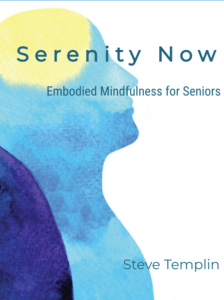One of the most respected clinicians in the treatment of chronic pain is Dr. John Sarno of the NYU Rehabilitative Medicine department. His research shows that up to 95% of chronic pain lingers because it is ultimately generated by the mind and brain.
This understanding of chronic pain begins to explain why many treatments for pain are ineffectual. They’re not effective in the long run because they don’t address the true cause of the pain. The cause of most chronic pain is a mind/brain software program that needs updating.
A Kaiser Permanente study published today in the American Journal of Managed Care tells us that 47% of chronic pain sufferers in a survey of 6,100 patients sought chiropractic care in addition to their medical care. The study also showed that 32% sought acupuncture for pain relief in addition to standard care.
My interpretation for the reason these significant numbers of patients are exploring alternatives is based on the work of John Sarno, M.D. and others, and on what I see in my own office. People are looking for alternative forms of treatment because standard care for chronic pain rarely addresses the mindbody cause.
I’ve used the Sarno protocol and additional components in my office for years with success.
The key to treating most chronic pain is to understand that pain can be programmed by the mind and brain. This understanding helps us to get unstuck from a purely physical cause for the pain. If the mind/brain causes the problem it can help to resolve the problem.
If on the other hand we believe or know that our pain is caused for example, by a disc, then via the nocebo (opposite of placebo) effect that pain becomes much more intractable. Dr. Sarno showed that even in the face of positive x-ray or MRI findings patients responded well with a mindbody approach to healing. The point here is that when considering chronic pain structural abnormalities are most often not the cause of the pain.
So the first step is understanding that if the mind and brain can create or sustain a chronic pain pattern it can also ease or resolve that pain. Armed with this information you can use whatever mindbody tools that you have at your disposal.
What I use most commonly are a combination of acupuncture to reset the limbic brain programming that sustains chronic pain, and the self-regulation tools that allow the patient to reprogram how their brain, body and glands respond to life.
The salient point here is that there are many options to conventional medical care for the treatment of chronic pain. The most injurious treatment that I see is the overuse of pain medications that can all too easily result in addiction.
Your mindbody is very resourceful and resilient.
 Steven Templin, D.O.M., Dipl. Ac. specializes in Acupuncture and Limbic Brain Repatterning to address the roots of chronic pain and illness. He offers a comprehensive mind-body program for addressing the underlying inflammation, toxicities, and stress-induced causes of most pain and illness.
Steven Templin, D.O.M., Dipl. Ac. specializes in Acupuncture and Limbic Brain Repatterning to address the roots of chronic pain and illness. He offers a comprehensive mind-body program for addressing the underlying inflammation, toxicities, and stress-induced causes of most pain and illness.
He places special emphasis on resolving the stress response and repairing adrenal gland and digestive system function to address the root causes of many common and often difficult to treat illnesses.
He translates emerging research in the fields of Epigenetics, Self-Regulation, Energy Psychology, and Functional Nutrition into effective practices that you can perform at home.
You can work with Dr. Templin in his Lakeland office, or online. You can visit his website at www.stevetemplin.com and contact him via email at drtemplin@gmail.com.
You can schedule an office visit with Dr. Templin by calling 863-838-2779.

 Steve is a retired Doctor of Oriental Medicine, Acupuncture Physician, and HeartMath Trauma-Sensitive Certified Practitioner with over 35 years of clinical experience in the fields of Energy Medicine, Energy Psychology, and Biofeedback.
Steve is a retired Doctor of Oriental Medicine, Acupuncture Physician, and HeartMath Trauma-Sensitive Certified Practitioner with over 35 years of clinical experience in the fields of Energy Medicine, Energy Psychology, and Biofeedback. 